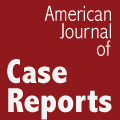Leptin, adiponectin, uric acid, cardiac rehabilitation
Barbara Kopff, Katarzyna Szmigielska, Anna Jegier
Med Sci Tech 2009; 50(1): RA43-48
ID: 881654
Available online:
Published: 2009-03-22
Introduction: Disturbances of secretion and action of adiponectin and leptin appear an important factor accelerating atherosclerosis. Usually the decrease of adiponectin concentration is accompanied by the increase of leptin and these occur in obesity. Increased uric acid concentrations are also considered a risk factor of atherosclerosis. Relationships between uric acid concentrations to the adipokines and their correlations with known, lipid atherosclerosis risk factors appear interesting and presumably important phenomenon. The aim of the study was to assess adiponectin, leptin and uric acid concentrations in male patients attending early cardiac rehabilitation post PCI, to find out any relations between adiponectin and leptin concentrations and other CHD risk factors: lipid profiles and uric acid concentrations in this specific group of patients undertaking moderate regular physical activity. Material and methods: The study was prospective observation of 38 males qualified to the program of early cardiac rehabilitation (ECR) after primary percutaneous coronary intervention (PCI) for the acute coronary syndrome (ACS) up to 30 days before. The exclusion criterion was diabetes mellitus. Before and at the end of the program blood samples were collected for laboratory tests. Adiponectin and leptin serum concentrations were assayed by immunoenzymatic methods. The total cholesterol, HDL cholesterol, triglycerides and uric acid concentrations were assayed by colorimetric methods. Results: The subjects were males, aged 41-66 years, average 53,34±6,7 years (median 54 years). Average body mass index was 28,32±3,52 kg/m2. BMI and waist circumference did not change significantly after eight weeks of ECR. Neither adiponectin nor leptin concentrations changed significantly after eight weeks (466,3±313,7 μg/dl and 835,87±460,14 ng/dl at the beginning of ECR). Before ECR in obese subgroup (n=11) adiponectin concentrations were significantly lower than in the overweight. This difference was no longer present after ECR due to the increase of adiponectin concentrations in obese. Leptin concentrations before and after rehabilitation were higher in obese. Lipid parameters and uric acid concentrations also stayed unchanged. After rehabilitation there was positive linear concentration between leptin and uric acid concentrations R=0,38; p<0,05. Conclusions: None of the analyzed parameters changed significantly during rehabilitation. This can be explained by limited amount of physical activity in the rehabilitation program and accompanying dynamic metabolic changes in early period post ACS. In obese patients even modest physical activity appears to exert beneficial effects. (Clin Exp Med Lett 2009; 50(1)43-48)
Keywords: Leptin, Adiponectin, Uric Acid, atherosclerosis, cardiac rehabilitation



